P1Sim Arnage in a nutshell
Advantages & Disadvantages
✅ A premium GT/F1-style steering wheel
✅ Vertical screen in the center for telemetry
✅ Compatible with many bases, provided you have the matching hub
❌ A very high asking price
❌ No hub for Direct Drive bases available from P1Sim
❌ Rubber coating that looks a bit cheap
With all the peripherals and other sim-racing accessories available in the premium segment, some drivers may get confused, and also be afraid of emptying their bank account on peripherals they may one day regret.
The premium sim-racing segment is more or less dominated by a few players, including Asetek SimSports and Simucube. These two brands offer products designed primarily for racing teams, which says a lot about the quality of the peripherals, and their cost too.
However, nature abhors a vacuum, and new brands emerge fairly regularly. The latest to emerge is P1Sim, a French company intent on carving out a share of the premium market by offering innovative, hand-crafted solutions that are relatively affordable by segment standards. In what follows, I’m going to introduce you to its GT and F1-style sim-racing steering wheel: theArnage.
Main and technical features of the steering wheel
- GT/F1-style upright steering wheel
- 4-inch vertical screen for displaying car telemetry
- Backlit controls (RGB) on faceplate
- RevLED on top of screen
- 4 rear paddles, 2 of which are magnetic
- Metal frame, with 5 mm-thick carbon-fibre front panel
- Compatible with bases from Moza, Simagic, Simucube, Asetek SimSports, Thrustmaster, Fanatec, etc., via brand-specific hubs
- Compatible with Simhub on PC
- Rubber coating all around the steering wheel
- 29 cm wheel diameter
Arnage design
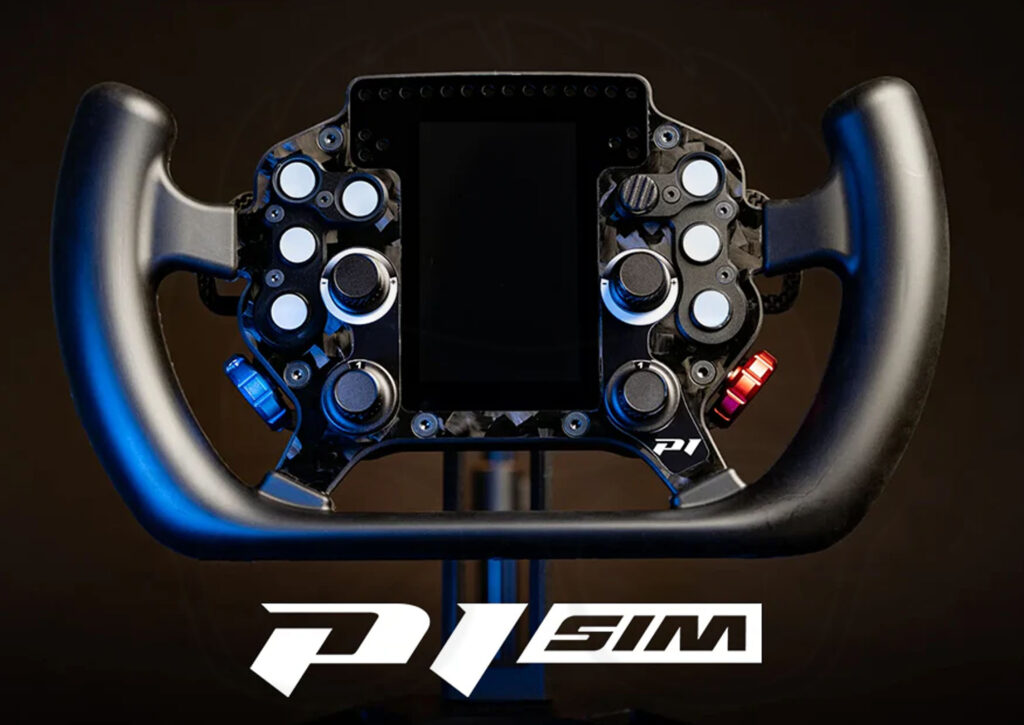
The Arnage’s design is very restrained compared to what you’ll find in sim-racing, especially in the premium category. More often than not, these steering wheels are flashy, with buttons in different colors. In this case, it’s a carbon-fiber faceplate, a fully open top, a vertical screen in the center and chunky handles on the sides.
All controls are arranged around the steering wheel, with a RevLED above. Only 2 rotary switches are colored, the rest are white (actually transparent for RGB) and black. The Arnage is a steering wheel that will go perfectly with any sim-racing setup, in my opinion.
Customized assembly
P1Sim doesn’t offer an in-house mounting system for the Arnage, or even a Direct Drive base at the moment. However, at the rear you’ll find a circle with a standard mounting pattern that will accommodate most QR Wheel Sides from brands such as Fanatec, Simagic, Moza, Asetek, Simucube, Thrustmaster and others.
All you need to do is purchase the universal solution for your Direct Drive base and attach the QR that goes with it to the Arnage. For example, you’ll need the Podium Hub and its QR for Fanatec, the D1Spec QR for Moza and Simagic, etc. On the other hand, the Arnage is designed for everyone, and the best thing to do is to inform the purchaser that he/she will need an adapter for his/her base in order to use this steering wheel.
Manufacturing and finishing
The P1Sim Arnage is a steering wheel aimed at the premium sim-racing segment, and this is reflected in its materials and construction – well, almost. The frame is aluminum, as is the backplate. The faceplate is made of 5mm-thick carbon fiber to give it a luxurious look, as well as saving weight on the scales. The paddles are also made of carbon fiber, which is an added bonus.
As for the finish, it’s top-notch. Everything is assembled by hand according to the brand’s website, and to perfection too. I didn’t notice any glaring manufacturing defects, nor did I expect to, to tell the truth. However, two points stand out on this steering wheel: the transparent silicone buttons and the rubber surround. At this price, it looks really cheap to use this, especially the rubber. A material such as leather or alcantara would have harmoniously complemented this steering wheel.
Handling the steering wheel
The Arnage’s diameter is 29 cm, which is not bad for most riders. The very rectangular shape, with an opening at the top, offers a good level of grip, and this is reinforced by large handles, close to what you’d find on a real car. It’s a welcome change from some brands’ F1 steering wheels, where you feel like you’re holding the handlebars of a bicycle.
The Arnage’s controls are distributed around the central screen, which doesn’t take up much space despite its 4-inch diagonal, given that it’s positioned vertically. Ergonomics are fine, but button usage isn’t up to the segment standard, and the reason is simple: the silicone button design means that they can catch when you press them, leaving them sinking in. Plastic buttons would really have been better, especially as it’s possible to integrate LED backlighting through them. But hey, it’s a point that can be corrected in the future.
At the rear of the Arnage are 4 adjustable paddles, 2 of them magnetic. They’re a good size, and fall easily to your fingertips once correctly positioned. And just in front of these paddles are two rotary switches which are normally located at the top of the steering wheel, close to your thumbs, but which have been moved down a level due to the design of the wheel. As a result, you can’t use them with your thumb, and you’ll have to do a bit of gymnastics with your other fingers (ring and/or little fingers) to operate them. It takes a little getting used to, but in the end it works.
Sensations during play
Coupled with a Direct Drive base of at least 10 nm, the Arnage shows its full potential in Formula or GT racing. The grips are of a good diameter, very close to what you’d find on a sports car, which makes for an excellent grip, far ahead of what you’d find from competitors like Moza Racing on some of their F1-type steering wheels.
Carbon fiber brings a significant weight saving, especially if your DD base is not very powerful(CSL DD, Moza R9, etc.). However, the structure is CNC-machined aluminum, which is heavier than carbon fiber. But then, as I mentioned above, the Arnage is part of a range of three flywheels, and P1Sim saw the light of day in 2022. So…
Another point worth mentioning is the general ergonomics of the controls. Apart from the rotary switches, which are positioned very low due to the design of the steering wheel, all other controls are easily accessible on the fly. Even the display proved very useful during the race, showing the vehicle’s telemetry, as well as being configurable via P1Sim or SimHub software. However, you can only use one piece of software at a time.

Steering wheel compatibility
The P1Sim Arnage is only compatible with PCs running Windows 10 or 11 via a USB connection. As far as sim-racing titles are concerned, I’ve had no problems with button mapping. What’s more, this steering wheel works superbly with SimHub, which is a plus for many PC gamers.
Value for money
The Arnage is currently on sale for 30% less on the P1Sim website, or €699 incl. VAT, which is frankly not too steep a price compared with the competition. It’s true that you’ll have to spend between €50 and €200 to acquire the hub that will enable the Arnage to be used with a DD base (depending on the brand), which could potentially push the price up to nearly €800. But if you’re looking for a steering wheel that’s “compatible” with your base, you’ve probably got the hub to go with it.
My verdict on the Arnage steering wheel from P1Sim
For a first season in the world of sim-racing, I have to say that P1Sim has done it right with the Arnage. It’s beautiful, almost super ergonomic, compatible with many bases provided you have the hardware to go with it, as well as being premium.
As far as I’m concerned, it’s a nice change from the F1-type steering wheels currently available, which are certainly First Party, but can sometimes feel too thin in the hands. The Arnage is a very good alternative if you can afford it, especially at the moment with its 30% price reduction.

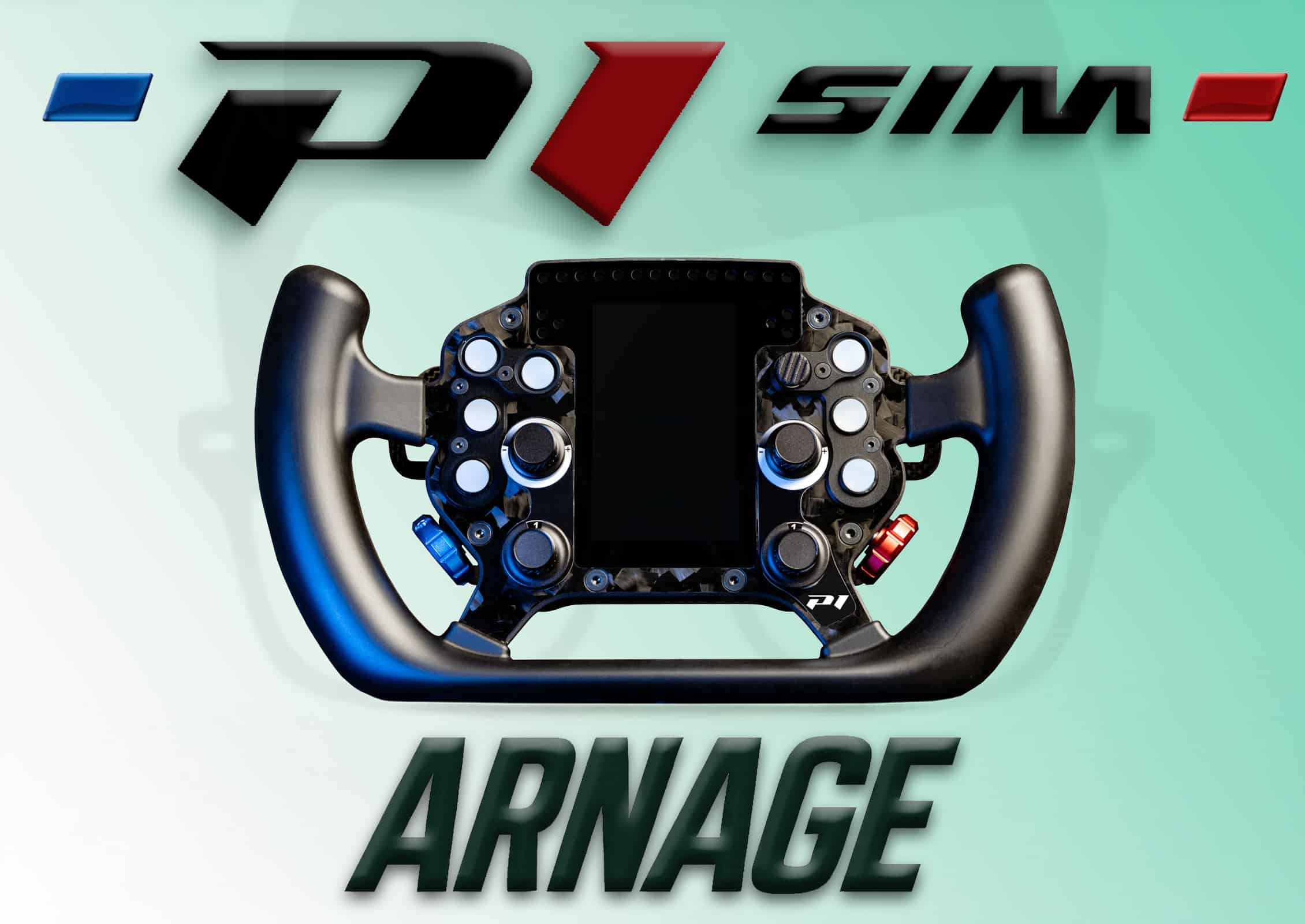
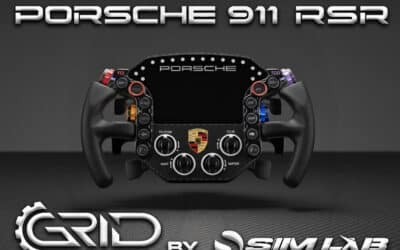

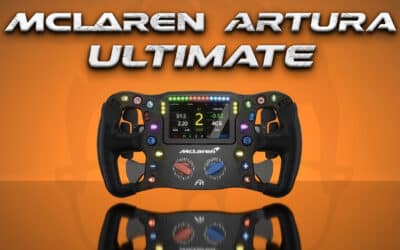
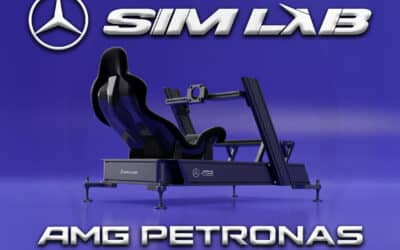
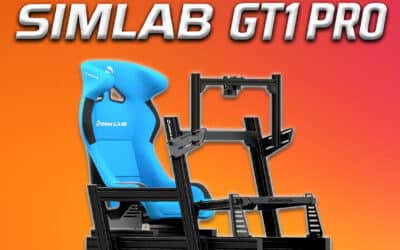
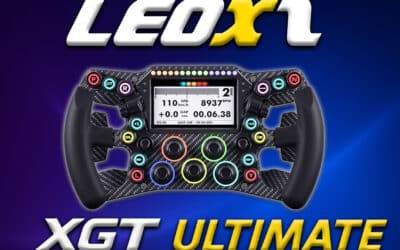
0 Comments